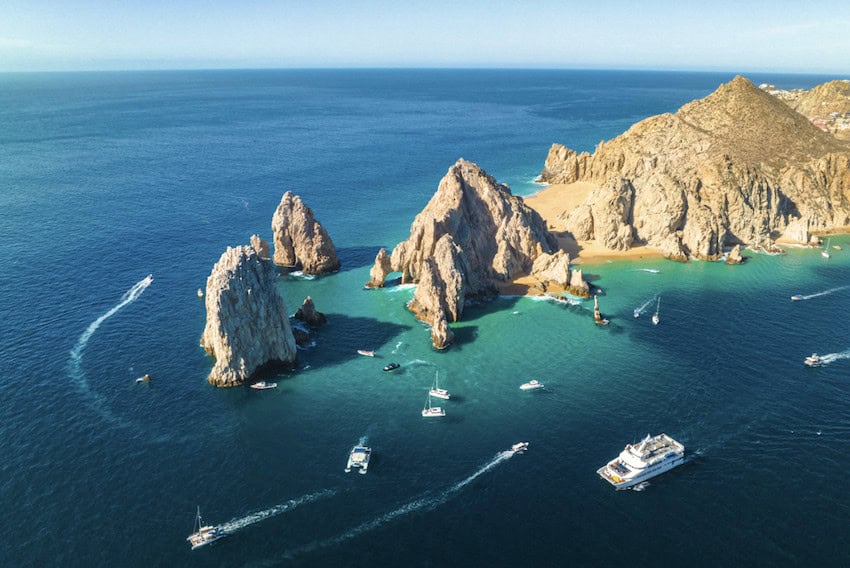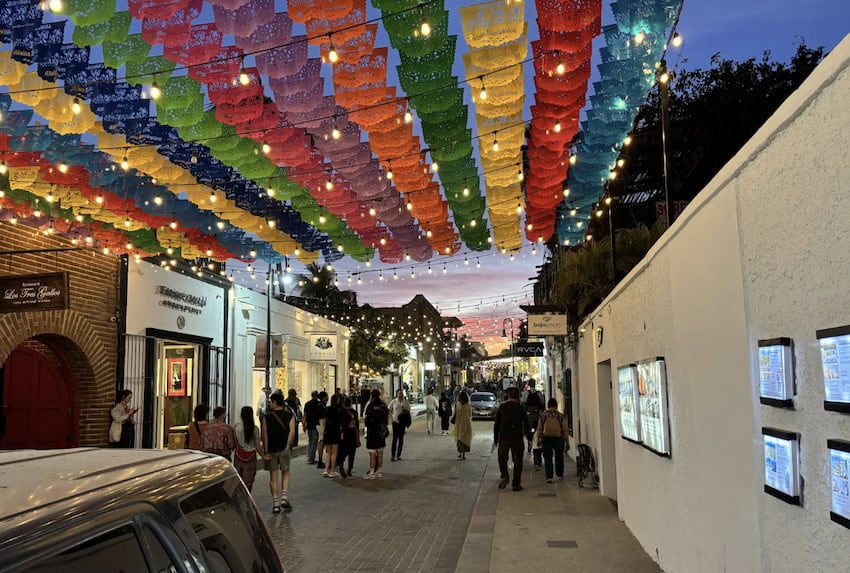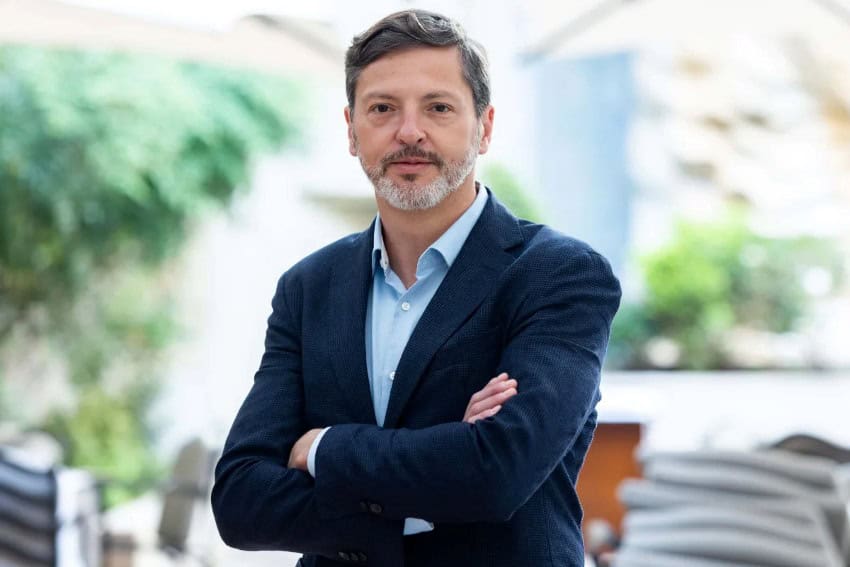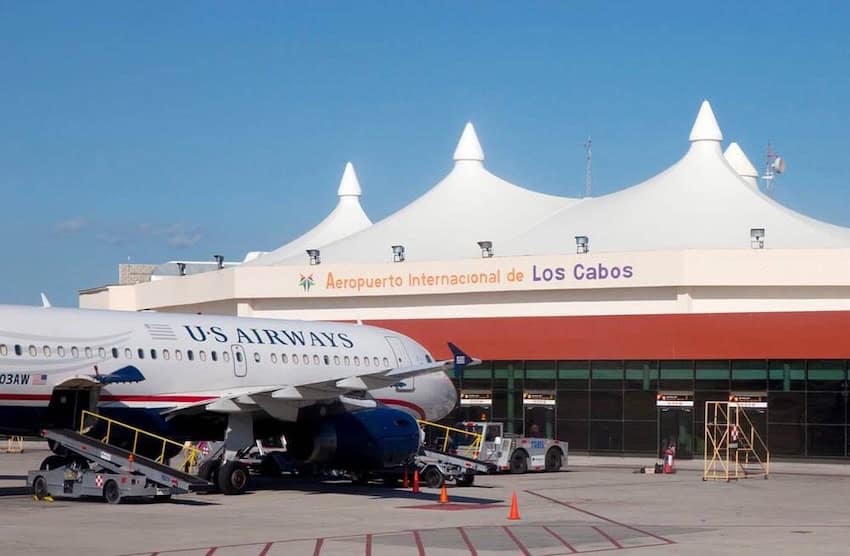The reason Los Cabos has become such a popular travel destination isn’t solely because of its creative and progressive tourism board (FITURCA), nor is it necessarily the reason why there are so many five-star rated luxury resorts and Michelin Guide recognized restaurants. After all, Los Cabos is a beautiful place with abundant natural attractions and plenty of resorts and restaurants that are savvy marketers.
But it has certainly helped (a lot) that the Los Cabos Tourism Board is so good at its appointed task of promoting the area and has willingly embraced innovative ideas, from a private tourism trust and an office in Los Angeles to award-winning digital design and laying the groundwork for Michelin Guide visits. I recently sat down with Rodrigo Esponda Cascajares, Managing Director of the Los Cabos Tourism Board, to find out how the organization has managed the most successful period in Los Cabos tourism history.

How did you become the Managing Director of the Los Cabos Tourism Board?
I have been lucky to be head of the Los Cabos Tourism Board for eight and a half years (it will be nine in October). Previously, I spent over 16 years at the Mexico Tourism Board, in New York, Chicago, Toronto, and then back to New York, the last four years as the Regional Director of North America.
After so many years in that job, I needed a different challenge, a new chapter in my life. So, I decided to resign, and then, the next day, I got a phone call from the private sector in Los Cabos, inviting me to come in for an interview to be the new head of the Los Cabos Tourism Board.
It was a good opportunity and a good way to aggregate all that I had been learning during the previous years. So on October 1, 2016, I started as the head of the Los Cabos Tourism Board, and it has been a true pleasure to be here and see so many different things. Los Cabos has a bright future as a destination.
Can you explain the Los Cabos Tourism Board to our readers and how it works, including the role of FIPROTUR, the private tourism trust?
The Los Cabos Tourism Board was created in 1997 and has been around for 28 years. The trust is administered from the hotel tax. The hotel tax is public funding. It started at 2%, then 3%, now it’s 4%.
There have been different formulas along the way. However, it was only four years ago that it was decided that only the tourism board would have a budget out of the 4% of the hotel tax, and from that, we would be proposing a calendar of activities, some objectives, key performance indicators, and so on.
The Private Trust Fund for the Promotion of Los Cabos (FIPROTUR) began because the private sector was concerned that only hotels were participating. Since the destination was evolving, it was believed that some new voices were needed. I told them we didn’t need to invent the wheel because in some parts of the world, the kind of private support they were talking about exists.
So, I explained that it was a formula where there would be some contributions from other sectors besides the hotel [sector] and that New York City, is funded by a government grant and a membership-based contribution of many organizations looking to participate and to have a voice in what New York City is going to do. Several models globally are similar, with slight differences depending on the destination. We decided it was a good idea to create a private organization that would complement the efforts being done with the public fund.
We have been truly transparent in how the public funding is being used. If you go through FITURCA’s website and the minutes of the meetings, I report to a board that is composed of the private and public sectors, including the state government and the private hotel association. Every two months, we have a board meeting where we present the initiatives, present the budget, and even small elements are adjusted. So it’s completely transparent.
At the beginning, it was a little bit challenging for the industry to understand the model because there was nothing like that in Mexico or Latin America. However, the disappearance of the Mexico Tourism Board (defunded in 2019) also helped to raise the awareness that we needed to work together. So by 2019, we had created and instituted the trust.
We started with the hotels, and then different members joined along the way. It’s not only in the tourism sector. Currently, we have almost 100 companies. Fifty of them are hotels, but we also have banks, restaurants, and other companies participating and having a voice in the positioning of the destination. We don’t go out trying to sell it to everybody. It’s more understanding of what we’re trying to do.
We do training for free for different companies and their employees who participate. So we have created a formula. We have an office in Los Angeles that is paid for by the private sector and can be used by private sector companies for free. It’s based in Los Angeles. That is our number one market. There’s a huge network in the California region with different channels of commerce, with different associations and organizations.

The office is very active in different activities, promotions, fan trips, and media outreach. And then, many of the partners in the destination also have offices in Los Angeles, so they actively participate with our office and coordinate throughout the year. It’s important because so many of our travelers come from California. So you can imagine the need to be in touch with travel advisors, with airlines, with meeting planners, and different companies.
So that formula has been optimized throughout the years. We are still doing some interesting additions because the industry continues to evolve. The two of them, the Los Cabos Tourism Board and FIPROTUR, complement each other in a very nice way because both of them are not-for-profit.
Have there been any instances where FIPROTUR has been particularly valuable?
One initiative that I would like to highlight for FIPROTUR involves the Michelin Guide, which, as you know, came to Mexico last year. However, we found out about the process very late. It wasn’t until 2023 that they came to us saying that the country and the Michelin Guide were working with different states to participate. So we had just two weeks to commit to them because they needed to come and evaluate and do the restaurant assessments.
We didn’t have it in the budget, either through the Los Cabos Tourism Board or FIPROTUR. We hadn’t planned for the funding, either publicly or privately. So we did an outreach process to the FIPROTUR members, telling them we have this opportunity, but we need to work fast.
If we commit, this is the timeline that we need, this is the budget that we need to accomplish, and this is extra because it’s a one-off opportunity. And let us know what you think, and then we will discuss it. And in one week, we had the additional funding contributed by the private sector in addition to their annual memberships, because they understood the big opportunity that this would be for the destination.

But to put it in perspective, we got like a four-year lead by embarking on the Michelin Guide because any destination that couldn’t commit in 2023 would not be able to be included until 2026 or 2027. And we had that lead ahead just by being able to work together.
What new markets are you trying to add for Los Cabos, not only from traditional tourism areas like the U.S. and Canada, but also from Europe, Asia, or South America?
When I started nine years ago, it was a priority to diversify inside the United States because we were fully concentrated on the West Coast. Now, that continues to be our primary market, but at that time, we didn’t even have a nonstop flight from New York. So I had to talk to the airlines, meet with them several times throughout the year to show them the numbers and show them that it would make a lot of sense to have a nonstop from New York.
It wasn’t easy, but flights from New York have now been a total success. We’ve been going through the different outbound markets to see where we need to focus and where we need to concentrate to get additional connectivity. And we meet regularly with all the airlines.
So with that in mind, it’s also a priority to diversify outside the United States, because this is a beautiful destination. And to be competitive and to keep up with changes in the tourism industry, we need to make sure that other markets can reach us.
We have a nonstop flight from Germany (Frankfurt), which took us several years to set up, and the numbers show that it’s not only bringing people from Germany, but also Italy, France, Spain, Switzerland, and even the U.K. So we’re continuing to make efforts in Europe, in terms of the conversations we’re having with airlines, and we’re just about to confirm a flight from South America.
It makes a difference, not only for Los Cabos but the entire Baja California Sur region, which is like an island. We don’t have manufacturing, we don’t have industrial fishing, we don’t have mining, we don’t have anything but tourism. Tourism is the main source of income for the community. The household income of families here is much higher than the national level because of tourism and all the travelers who are coming to the destination. So we have a big responsibility to continue increasing connectivity to transfer those benefits to the community.
During your tenure, Los Cabos has seen record numbers of tourists, doubling from two million to four million annually. Do you think those numbers can go higher, or are you happy with where they’re at right now?
We have almost doubled the numbers. However, in the last three years, we have not doubled. In 2023, in 2024, and in 2025, we’re going to have almost a flat performance in terms of the travelers, which is good because the destination grew very fast in the recovery process of COVID-19 due to all the dynamics that were generated. And we, the destination, took advantage of that recovery, the conditions, the fact of working very closely all together in all the associations.
But that generated a lot of situations internally in terms of the infrastructure, the resources, housing, energy, and many, many, many things that the destination needs to address. So it is an opportunity to keep the same number of travelers in three years, to adjust, to maximize, and to focus on the quality, not the quantity. We need to change the mindset in that.
Fortunately, we’ve been mentioning this in the last three years to the associations, and nobody’s complaining that the destination is not having double-digit growth. By contrast, everybody’s very happy that the number of travelers coming to the destination is not decreasing, especially among international travelers, because that is happening in other destinations in Mexico. Here, the average spending rate per traveler is increasing.

So it’s the best scenario in that you have the same number of visitors who are spending more, and forty percent of the travelers who are coming to the destination are repeat travelers. That’s super high if you compare it to many other destinations around the world.
Do you monitor people’s feedback from their Los Cabos vacation? What do you think they respond to most positively, and what would they like to see improved?
We conduct an exit survey of travelers every day, and we also survey the community, because it’s equally important to understand what the community is saying as what the travelers are telling us.
The satisfaction level is 95%. Of course, the natural beauty of Los Cabos is the most important factor [for] traveler satisfaction. They love the place, they love its beauty. The quality of the services and hospitality is the second favorite thing, then food.

We use a technique called net promoter score to score positive, negative, and neutral impressions from travelers, and we measure it into 15 elements. Yes, some things need to be improved. Traffic is one of them. We’re also monitoring the relationship between cost and quality. We need to make sure that travelers perceive that what they are paying is the right price for the quality of services that they are getting.
We pass this information to the different hotel associations, to the authorities, for them to understand the feedback that the travelers are providing to us, and the responsibility that we have to build up and finish some infrastructure projects that are needed in the destination, including the airport, roads, housing, energy, water, and many others.
Your website is interactive, and I know you have virtual reality options, too, so people can explore the destination before they decide to visit. Can you talk about why this was so important?
A few years back, when I started, we checked the website and the digital assets, and they were not good. So we started evaluating in 2016 and 2017, and what we needed to do was start from scratch. It was a little bit controversial internally, especially with the hotels. So it was one of those battles that you have, because some people are saying no, don’t invest in the digital assets.
Once we decided that we would do it, we started from scratch, we invested, and thus were able to get to the place where we are now, where we’ve added so many innovative tools that they’ve even been acknowledged as exceptional by tourism industry standards internationally.
It’s a process that started eight years ago. It didn’t happen overnight, because even if you wanted to do it that fast, you couldn’t. For example, on our website, we have 1,200 companies that update their information. So it’s not that our team is updating because there’s just no way we could stay on top of 300 restaurants, plus all the hotels and other companies.
We also have an artificial intelligence chatbot that scrolls around. Things To Do is one of the most visited sections, with a 95% click-through rate, so that travelers looking to find attractions or activities start interacting with the artificial intelligence and find what they’re looking for.
And then we have a virtual reality experience that can be accessed through Apple or Google, for example. We announced it and launched it two months ago. We’ve already been working on the new version that is coming next year. We have to, because the technology advances so fast!
Chris Sands is the Cabo San Lucas local expert for the USA Today travel website 10 Best, writer of Fodor’s Los Cabos travel guidebook and a contributor to numerous websites and publications, including Tasting Table, Marriott Bonvoy Traveler, Forbes Travel Guide, Porthole Cruise, Cabo Living and Mexico News Daily. His specialty is travel-related content and lifestyle features focused on food, wine and golf.
